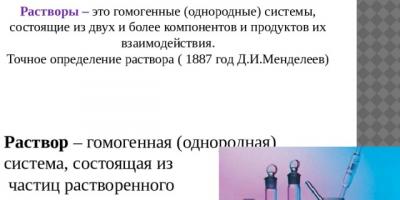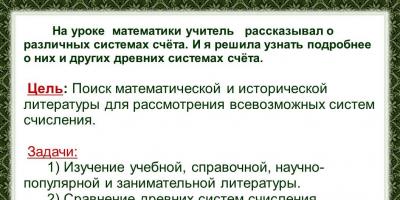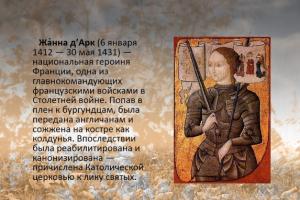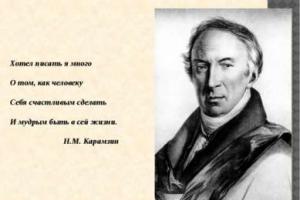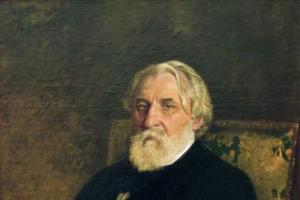1 slide

2 slide
I wanted to write a lot about how a person can make himself happy and be wise in this life. N.M. Karamzin

3 slide
N.M. Karamzin was born on December 12 (December 1 - according to the old style) 1766 in the village of Mikhailovka, Simbirsk province, into a noble family. Received a good home education; knew German, French, English, Italian. Childhood

4 slide
In 1778, at the age of 14, Karamzin was sent to Moscow and sent to the boarding school of Moscow University professor I.M. Schaden, where he studied from 1775 to 1781. At the same time, he attended lectures at the university. Boyhood

5 slide
In 1783, at the insistence of his father, Karamzin was assigned to the Preobrazhensky Life Guards Regiment in St. Petersburg, but at the beginning of 1784 he retired and went first to Simbirsk and then to Moscow. In Moscow, Karamzin met writers and writers: N.I. Novikov, A.M. Kutuzov, A.A. Petrov. Youth

6 slide
In 1801, Karamzin married Elizaveta Ivanovna Protasova. She died in 1802. In 1804, Karamzin married a second time - to the illegitimate daughter of Prince A.I. Vyazemsky Ekaterina Andreevna Kolyvanova. They had five children, and the family also raised Karamzin’s daughter from her first marriage, Sophia. Family

7 slide
Emperor Alexander I, by personal decree of October 31, 1803, granted Karamzin the title of historiographer; At the same time, an annual salary of 2 thousand rubles was added to the title for writing a complete history of Russia. In 1804, Karamzin began work on the “History of the Russian State,” the compilation of which became his main occupation for the rest of his life. In February 1818, Karamzin released the first eight volumes of the History of the Russian State. In 1821, volume 9 was published, in 1824 - 10 and 11. Volume 12 was never completed (after Karamzin’s death it was published by D.N. Bludov). Already during the writer’s lifetime, critical works appeared on his “History...”. At a later time, “History...” was assessed positively by A.S. Pushkin, N.V. Gogol, Slavophiles; negative – Decembrists, V.G. Belinsky, N.G. Chernyshevsky. "History of Russian Goverment"

8 slide

Slide 9
Karamzin's prose and poetry had a significant influence on the development of the Russian literary language. Karamzin introduced many new words into the Russian language - both neologisms (charity, love, freethinking, landmark, industry, touching, humane) and borrowings (sidewalk, coachman). Karamzin was one of the first to use the letter E. Language reform

10 slide
Before the publication of the first eight volumes, Karamzin lived in Moscow. As a result of the Moscow fire, Karamzin’s personal library, which he had been collecting for a quarter of a century, was destroyed. In 1816, Karamzin moved to St. Petersburg, where he spent the last 10 years of his life and became close to the royal family. He spent the summer in Tsarskoe Selo. In 1818, Karamzin was elected an honorary member of the St. Petersburg Academy of Sciences. In 1824 he became a full state councilor. Karamzin was the initiator of organizing memorials and erecting monuments to outstanding figures of national history, one of which was the monument to K.M. Minin and D.M. Pozharsky on Red Square in Moscow (sculptor I.P. Martos, 1818). Maturity

11 slide
Karamzin's death was the result of a cold contracted on December 14, 1825, and on June 3 (May 22 - old) 1826, he died in St. Petersburg. He was buried at the Tikhvin Cemetery of the Alexander Nevsky Lavra. Death
Born on December 1 (12 n.s.) 1766 in the village of Mikhailovka, Simbirsk province. He grew up in the estate of the father of retired captain Mikhail Yegorovich Karamzin () a middle-class Simbirsk nobleman, a descendant of the Crimean Tatar Murza Kara-Murza. Church of the Sign of the village of Karamzinka.

At the age of 14, Karamzin was brought to Moscow and sent to a private boarding school for Moscow University professor I.M. Schaden, where he studied from 1775 to Received home education.


Having graduated from it in 1783, he came to the Preobrazhensky Regiment in St. Petersburg, where he met the young poet and future employee of his “Moscow Journal” Dmitriev. with the young poet and future employee of his “Moscow Magazine” Dmitriev.

The first literary experiments date back to his military service. At the same time he published his first translation of S. Gesner’s idyll “The Wooden Leg”. The first literary experiments date back to his military service. At the same time he published his first translation of S. Gesner’s idyll “The Wooden Leg”. Autograph of a poem by N.M. Karamzin “Happiness is truly preserved” (1787).

Having retired with the rank of second lieutenant in 1784, he moved to Moscow, became one of the active participants in the magazine “Children's Reading for the Heart and Mind,” published by N. Novikov, and became close to the Freemasons. “Children's reading for the heart and mind,” published by N. Novikov, and became close to the Freemasons.

In 1789, Karamzin’s first original story, “Eugene and Yulia,” appeared in the magazine “Children’s Reading...”. In the spring, he went on a trip to Europe: he visited Germany, Switzerland, France, where he observed the activities of the revolutionary government. In June 1790 he moved from France to England. In 1789, Karamzin’s first original story, “Eugene and Yulia,” appeared in the magazine “Children’s Reading...”. In the spring, he went on a trip to Europe: he visited Germany, Switzerland, France, where he observed the activities of the revolutionary government. In June 1790 he moved from France to England.

In the fall, Karamzin returned to Moscow and soon undertook the publication of the monthly "Moscow Journal", in which most of the "Letters of a Russian Traveler" were published. In the autumn, Karamzin returned to Moscow and soon undertook the publication of the monthly "Moscow Journal", in which most of the "Letters" were published Russian traveler".

Also in the Moscow Journal were published the stories "Liodor", "Poor Liza", "Natalia, the Boyar's Daughter", "Flor Silin", essays, stories, critical articles and poems. Also in the "Moscow Journal" the stories "Liodor" were published ", "Poor Liza", "Natalia, the boyar's daughter", "Flor Silin", essays, stories, critical articles and poems. Illustration for “Poor Liza” 1796 by N. Sokolova.

Karamzin attracted Dmitriev and Petrov, Kheraskov and Derzhavin, Lvov Neledinsky-Meletsky and others to collaborate in the magazine. The success of the Moscow Journal was enormous, with as many as 300 subscribers. only writing and reading Russia! A very large figure for those times. This is how small not only writing and reading Russia is! Karamzin's articles approved the new literary direction of sentimentalism. A very large figure for those times. This is how small not only writing and reading Russia is! Karamzin's articles approved the new literary direction of sentimentalism.

In the 1790s, Karamzin published the first Russian almanacs "Aglaya" and "Aonids". The year 1793 came, when at the third stage of the French Revolution the Jacobin dictatorship was established, which shocked Karamzin with its cruelty. The dictatorship aroused in him doubts about the possibility for humanity to achieve prosperity. He condemned the revolution. In the 1790s, Karamzin published the first Russian almanacs "Aglaya" and "Aonids". The year 1793 came, when at the third stage of the French Revolution the Jacobin dictatorship was established, which shocked Karamzin with its cruelty. The dictatorship aroused in him doubts about the possibility for humanity to achieve prosperity. He condemned the revolution.

The philosophy of despair and fatalism permeates his new works: the story “The Island of Bornholm” (1793); "Sierra Morena" (1795); poems “Melancholy”, “Message to A. A. Pleshcheev”, etc.

N. M. Karamzin is the “father” of the letter “E”. In 1796, in the first book of the poetic almanac “Aonids” published by Karamzin, which came out from the same university printing house, the words “dawn”, “eagle”, “moth”, “tears”, as well as the first verb were printed with the letter “e” “drip” of “Aonida”, which came out of the same university printing house, with the letter “e” the words “dawn”, “eagle”, “moth”, “tears” were printed, as well as the first verb “drip”

By the mid-1790s, Karamzin became the recognized head of Russian sentimentalism, which was opening a new page in Russian literature. He was an indisputable authority for Zhukovsky, Batyushkov, and young Pushkin. Karamzin was the number one writer of his time. Karamzin was the number one writer of his time.

In 1802, Karamzin’s first wife, Elizaveta Ivanovna Protasova, died. In 1802, he founded Russia's first private literary and political magazine, Vestnik Evropy, for whose editors he subscribed to the 12 best foreign magazines. Ekaterina Andreevna Kolyvanova.


Literature and politics predominated in the "Bulletin of Europe". In Karamzin’s critical articles, a new aesthetic program emerged, which contributed to the formation of Russian literature as nationally distinctive. Literature and politics predominated in the "Bulletin of Europe". In Karamzin’s critical articles, a new aesthetic program emerged, which contributed to the formation of Russian literature as nationally distinctive. Karamzin saw the key to the uniqueness of Russian culture in history.

Despite the large number of authors, Karamzin has to work a lot on his own and, so that his name does not flash before the eyes of readers so often, he invents a lot of pseudonyms. At the same time, he became a popularizer of Benjamin Franklin in Russia. "Bulletin of Europe" existed until Despite the large number of authors, Karamzin has to work a lot on his own and, so that his name does not flash before the eyes of readers so often, he invents a lot of pseudonyms. At the same time, he became a popularizer of Benjamin Franklin in Russia. "Bulletin of Europe" existed until 1803.



From that moment on, he settled in the Moscow house of the Vyazemsky princes, in which he lived until the House in Krivokolenny Lane, where N.M. lived. Karamzin

In 1804 he began work on the “History of the Russian State,” compiling which became his main occupation until the end of his life. He began work on the “History of the Russian State,” compiling which became his main occupation until the end of his life.

The first eight volumes of the History of the Russian State were published all at once in 1818. They say that, having slammed the eighth and final volume, Fyodor Tolstoy, nicknamed the American, exclaimed: “It turns out that I have a Fatherland!” And he wasn't alone. Thousands of people thought, and most importantly, felt this very thing. They say that, having slammed the eighth and final volume, Fyodor Tolstoy, nicknamed the American, exclaimed: “It turns out that I have a Fatherland!” And he wasn't alone. Thousands of people thought, and most importantly, felt this very thing.

Karamzin writes to his brother: “History is not a novel: a lie can always be beautiful, but only some minds like the truth in its garb.” So what should I write about? Set forth in detail the glorious pages of the past, and only turn over the dark ones? Maybe this is exactly what a patriotic historian should do? No, Karamzin decides that patriotism is not at the expense of distorting history. He doesn’t add anything, doesn’t invent anything, doesn’t glorify victories or downplay defeats. Karamzin writes to his brother: “History is not a novel: a lie can always be beautiful, but only some minds like the truth in its garb.” So what should I write about? Set forth in detail the glorious pages of the past, and only turn over the dark ones? Maybe this is exactly what a patriotic historian should do? No, Karamzin decides that patriotism is not at the expense of distorting history. He doesn’t add anything, doesn’t invent anything, doesn’t glorify victories or downplay defeats.

All students, officials, nobles, even society ladies were engrossed in History. They read it in Moscow and St. Petersburg, they read it in the provinces: distant Irkutsk alone bought 400 copies. After all, it is so important for everyone to know that they have it, the Fatherland.


Nikolai Mikhailovich Karamzin is a man who in some way changed people’s concepts. At the age of 19, Karamzin already knew several languages and fluently translated the works of Shakespeare and other foreign writers. After some time, the future poet dropped out of school and began writing on his own. The presentation of “Karamzin” shows the course of his life in chronological order.
Karamzin Nikolai Mikhailovich was a man who lived and loved to study life. He traveled abroad and personally met many poets of that time. Studying Karamzin’s works and manuscripts, many researchers to this day find new details and reasons for controversy. This presentation on the biography of Karamzin illuminates previously unmentioned secrets of the life of the famous Russian poet and cultural figure. The life and work of Karamzin is an interesting and educational material for lessons in any class.
You can view the slides on the website or download a presentation on the topic “Karamzin” in PowerPoint format from the link below.
Biography of Karamzin  Birth
Birth  Lieutenant
Lieutenant  First printed work
First printed work  Travel abroad
Travel abroad  First stories
First stories  Quotes
Quotes  Literary youth
Literary youth  Created logs
Created logs  Interest in Russia
Interest in Russia  Appointment as historiographer
Appointment as historiographer  Death
Death
Description of the presentation by individual slides:
1 slide
Slide description:
Nikolai Mikhailovich Karamzin - writer and historian (1766-1826) Whatever you turn to in our literature - everything began with Karamzin: journalism, criticism, story-novel, historical story, journalism, the study of history. V.G. Belinsky
2 slide
Slide description:
Nikolai Mikhailovich Karamzin Honorary member of the Imperial Academy of Sciences (1818), full member of the Imperial Russian Academy (1818). Creator of the “History of the Russian State” (volumes 1-12, 1803-1826) - one of the first generalizing works on the history of Russia. Editor of the Moscow Journal (1791-1792) and Vestnik Evropy (1802-1803). Writer, rhetorician, historian, translator. This man made a great contribution to the history of his country.
3 slide
Slide description:
Born into the family of a middle-income landowner in the Simbirsk province, M. E. Karamzin. The upbringing and education of the future writer were associated with the patriarchal traditions of provincial noble culture. He studied at one of the best private boarding schools of Moscow University professor I.M. Schaden, where he studied languages in 1779-1880; He also attended lectures at Moscow University.
4 slide
Slide description:
In 1781 he began serving in the Preobrazhensky Regiment in St. Petersburg, where he became friends with A.I. and I.I. Dmitrievs. This is a time not only for intense intellectual pursuits, but also for the pleasures of social life. After the death of his father, Karamzin retired as a lieutenant in 1784 and never served again, which was perceived in the society of that time as a challenge. After a short stay in Simbirsk, where he joined the Masonic lodge, Karamzin moved to Moscow and was introduced into the circle of N.I. Novikov, settled in a house that belonged to the Novikov Friendly Scientific Society (1785). He studied the literature of the French Enlightenment, German writers and romantic poets, and was engaged in translations (Karamzin spoke many ancient and modern languages). Finding a way...
5 slide
Slide description:
The desire for broad education leads Karamzin to the idea of a European journey. On May 18, 1789, Nikolai Karamzin went on a trip to Europe. He visited Austria, Switzerland, France, England, met with I. Kant, I. Goethe, and in Paris witnessed the events of the French Revolution. Karamzin outlined his impressions from a trip to Western European countries in “Letters of a Russian Traveler.”
6 slide
Slide description:
“Letters of a Russian Traveler” were published in the “Moscow Journal” (1791–1792), the publication of which Karamzin undertook upon returning from abroad for the “Moscow Journal” in 1802–1803. Karamzin founded the “Bulletin of Europe” magazine, which for a long time became the best Russian literary magazine, where the writer’s critical, journalistic, and historical articles appear.
7 slide
Slide description:
“Children’s reading for the heart and mind” (1787-1789), “Moscow Magazine” (1802-30) “Bulletin of Europe” (1802-03) Magazines created by N.M. Karamzin
8 slide
Slide description:
Karamzin’s story “Poor Liza” (1792) also appeared in the Moscow Journal, and was enthusiastically accepted by his contemporaries. The laconicism of the narrative, the subtlety of artistic writing, the ability to make the reader a participant in the experiences of the characters, the spirituality and lyricism of the sometimes gloomy, sometimes joyful spring, sometimes stormy and menacing landscape, in tune with the feelings of the author and the characters in the story, the complexity of the psychological picture - all this was new for the Russian reader. Karamzin's story was perceived as a true story (just as it was in Germany with Goethe's The Sorrows of Young Werther); the vicinity of the Simonov Monastery, where Liza lived and died, “Lizin’s Pond” became for a long time a favorite place of pilgrimage for the educated noble public.
Slide 9
Slide description:
An artistic direction (current) in art and literature of the late 18th – early 19th centuries. From English SENTIMENTAL - sensitive. “An elegant image of the basic and everyday” (P.A. Vyazemsky.) Sentimentalism
10 slide
Slide description:
Reform of the Russian literary language. Karamzin’s language reform opposed Lomonosov’s principle of “three calms”. Rejecting the high syllable of classical tragedy and ode, as well as the low everyday vernacular, Karamzin focused on the “middle” syllable that is common to all literary genres. The norm for him was the spoken language of an educated society, the language of the noble intelligentsia, and this made his reform half-hearted and limited. The unpolished, everyday language of the people seemed rude and unpoetic to Karamzin.
11 slide
Slide description:
Karamzin's prose and poetry had a decisive influence on the development of the Russian literary language. Karamzin introduced many new words into the Russian language as neologisms (“charity”, “love”, “freethinking”, “attraction”, “responsibility”, “suspiciousness”, “industry”, “refinement”, “first-class”, “humane” ), and barbarisms (“sidewalk”, “coachman”). He was also one of the first to use the letter E. Reform of the Russian literary language. Monument to the letter E in Ulyanovsk
12 slide
Slide description:
“Karamzin transformed the Russian language, removing it from the stilts of Latin construction and heavy Slavism and bringing it closer to living, natural, colloquial speech” V.G. Belinsky “Beauty and sensitivity - that’s what fascinated Karamzin” (One of the writer’s contemporaries)
Slide 13
Slide description:
Our tongue was a heavy caftan and smelled too much of antiquity. Karamzin gave him a different cut - Let the schisms grumble to themselves, Everyone accepted his cut. Peter Vyazemsky.
Slide 14
Slide description:
In the 1890s, his interest in Russian history increased; he gets acquainted with historical works, the main published sources: chronicles, notes of foreigners, etc. The birth of a plan... History in a sense is the sacred book of peoples: the main, necessary; a mirror of their existence and activity; the tablet of revelations and rules; the covenant of ancestors to posterity; addition, explanation of the present and example of the future. From the Preface to the “History of the Russian State”
15 slide
Slide description:
The poetic image of Lisa is drawn as the embodiment of hard work, modesty, selfless, simple-minded gullibility and dedication. She is a devoted daughter, lovingly caring for her mother. This is the first heroine in Russian literature who, forgetting about duty and reason, went towards her feelings. The poetic image of Lisa is drawn as the embodiment of hard work, modesty, selfless, simple-minded gullibility and dedication. She is a devoted daughter, lovingly caring for her mother. This is the first heroine in Russian literature who, forgetting about duty and reason, went towards her feelings. Creation of “History...” Karamzin’s idea of creating a work on the history of Russia appeared in June 1803. In October 1803, Karamzin obtained from Alexander I an appointment as a historiographer with a pension of 2,000 rubles. for writing Russian history. Libraries and archives were opened for him. Initially, Karamzin planned to write the entire work in 5-6 years, covering the period from antiquity to the formation of the Romanov dynasty, but in 1808 it became clear that the work turned out to be more difficult than expected... Until the last day of his life, Karamzin was busy writing “The History of the Russian State.” In this work, the writer created a gallery of characters of Russian people: princes, peasants, generals, heroes of numerous battles “for the Russian land.”
16 slide
Slide description:
The poetic image of Lisa is drawn as the embodiment of hard work, modesty, selfless, simple-minded gullibility and dedication. She is a devoted daughter, lovingly caring for her mother. This is the first heroine in Russian literature who, forgetting about duty and reason, went towards her feelings. History of the Russian State “History of the Russian State” is a multi-volume work by N. M. Karamzin, describing Russian history, starting from the times of the Scythians, Slavs to the times of Ivan the Terrible and the Time of Troubles. Twelve volumes of “History of the Russian State” were created over 21 years - from the beginning of 1804 to the spring of 1826. His book caused an unprecedented public outcry, which contributed to the formation of civic consciousness in Russia. In addition, Karamzin’s work gave a powerful impetus to the development of historical science.
Slide 17
Slide description:
The poetic image of Lisa is drawn as the embodiment of hard work, modesty, selfless, simple-minded gullibility and dedication. She is a devoted daughter, lovingly caring for her mother. This is the first heroine in Russian literature who, forgetting about duty and reason, went towards her feelings. The ancient history of Russia was being written, and modern history was seething nearby... On December 14, 1825, Karamzin witnessed the uprising on Senate Square. Having caught a cold on the streets of St. Petersburg, he fell ill; moral suffering was added to this - faith in peace and harmony was completely destroyed, a new king was on the throne, unlike the “enlightened monarch” the historian thought about. Volume XII remained unfinished, but the significance of everything Karamzin did for national culture is enormous.
18 slide
Slide description:
Nikolai Mikhailovich Karamzin died in 1826 without finishing work on the 12th volume, in which he described and analyzed the events of the Time of Troubles. In 1845, a monument to Nikolai Mikhailovich was erected in Simbirsk. On the monument, along with the image of Karamzin, we see a statue of the muse of history, Clio. “We love one thing, we desire one thing: we love the Fatherland, we wish it prosperity even more than glory.” N.M. Karamzin (1815)
Nikolay Karamzin
Slides: 15 Words: 580 Sounds: 0 Effects: 0Nikolai Mikhailovich Karamzin. Russian historian, writer, poet, journalist, honorary member of the St. Petersburg Academy of Sciences (1818). Born on December 1 near Simbirsk. Father is a retired captain. From 1782 he served in the Preobrazhensky Guards Regiment. N.M. Karamzin. He knew Church Slavonic, French, and German. In 1783, Karamzin’s first printed work, “The Wooden Leg,” appeared. In 1784 Karamzin retired and lived in Simbirsk until July 1785. Simbirsk. Alexander Semenovich Shishkov Society "Conversation of lovers of the Russian word." Our tongue was a heavy caftan and smelled too much of antiquity. - Karamzin.ppt
Karamzin Nikolai Mikhailovich
Slides: 14 Words: 622 Sounds: 0 Effects: 0Nikolai Mikhailovich Karamzin (1766-1826). Nikolai Mikhailovich Karamzin. Born on December 1 near Simbirsk. Father is a retired captain. From 1782 he served in the Preobrazhensky Guards Regiment. N.M. Karamzin. He knew Church Slavonic, French, and German. In 1783, Karamzin’s first printed work, “The Wooden Leg,” appeared. In 1784 Karamzin retired and lived in Simbirsk until July 1785. Simbirsk. Our tongue was a heavy caftan and smelled too much of antiquity. Peter Vyazemsky. Magazines created by N.M. Karamzin. Until the last day of his life, Karamzin was busy writing “The History of the Russian State.” - Karamzin Nikolai Mikhailovich.ppt
Sentimentalism Karamzin
Slides: 13 Words: 893 Sounds: 0 Effects: 0Sentimentalism as a literary movement. Content. Conclusion Conclusion The significance of N.M.’s creativity Karamzin IV. What is sentimentalism? One of the brightest representatives of sentimentalism is N.M. Karamzin. . . And not to a noble nobleman, not to a statesman or commander, but to a writer - N.M. Karamzin. Biography of N.M. Karamzin. Here, according to Dmitriev, “Karamzin’s education began, not only as an author, but also as a moral one.” The influence of the circle lasted 4 years (1785 - 88). Who could love so strangely, How I loved you? But I sighed in vain, I was tormented, I was destroying myself! - Sentimentalism Karamzin.ppt
Karamzin's creativity
Slides: 15 Words: 361 Sounds: 0 Effects: 26Presentation on literature on the topic: Life and work of N.M. Karamzin. Nikolai Mikhailovich Karamzin (1766 – 1826). V.G. Belinsky. Nikolai Mikhailovich Karamzin is a famous Russian writer, poet, journalist, historian. Having begun his literary activity in 1783 with translations from German, in 1787-1789. N.M. Karamzin. Military service. Death of father Resignation Simbirsk. Passion for Freemasonry Literature Studying history. Simbirsk province A well-born but poor noble family. Secular education Knowledge of foreign languages. Euro-trip. Sentimentalism. SENTIMENTAL - sensitive. “An elegant image of the basic and everyday” (P.A. Vyazemsky). - Karamzin’s creativity.ppt
Poor Lisa
Slides: 20 Words: 499 Sounds: 1 Effects: 109“Poor Liza” by N.M. Karamzin as an example of sentimentalism. N.M. Karamzin. Secular education Moscow boarding school. Military service, Preobrazhensky Regiment. I.P. Turgenev is a freemason, writer and translator. Simbirsk province, 1766. A well-born but poor noble family. Travel through Europe - 1789 -1790 N.M. Karamzin - journalist, writer, historian. A.G. Venetsianov. 1828. Mythological vocabulary in the story “Poor Liza.” View of Moscow from the Simonov Monastery. “Near the Simonov Monastery there is a pond shaded by trees. 25 years before this I composed “Poor Liza” there. “...And peasant women know how to love!” - Poor Lisa.ppt
Karamzin Poor Liza
Slides: 14 Words: 575 Sounds: 0 Effects: 105A. S. Pushkin “Reason and Love.” The history of the creation of the story. The story was written in 1792. The heroine’s suicide was such a “new word” in the story. The work of N. M. Karamzin played an outstanding role in the history of Russian literature. The meaning of the Simonov Monastery in the story “Poor Liza.” First meeting. …. Lisa came to Moscow with lilies of the valley. Heroes of the story. Erast. Lisa. Author. Lisa's mother. Rich widow. friend Anyuta. Who is the main character of the story? Hardworking. Nurse. Divine mercy. The joy of old age. Darling. Dear. Tender. What characterization does the author give to the heroine? Loved my mother. - Karamzin Poor Liza.ppt
Boris Godunov Karamzin
Slides: 9 Words: 391 Sounds: 0 Effects: 32Boris Godunov in the image of N.M. Karamzin. N.M. Karamzin “History of the Russian State” (1803 – 1826). What a treasure for language, for poetry!” V.A. Zhukovsky. “The reign of Boris Godunov was marked by the beginning of a rapprochement between Russia and the West. In foreign policy, Boris Godunov proved himself to be a talented diplomat.” School encyclopedia "Russica". Russian history. Boris Godunov in the characterization of N.M. Karamzin. Positive characteristics. Negative characteristics. That is why N.M. Karamzin treats Boris Godunov as an impostor and murderer. - Boris Godunov Karamzin.ppt
Karamzin Natalia boyar's daughter
Slides: 19 Words: 995 Sounds: 0 Effects: 3(based on the story “Natalia, the Boyar’s Daughter” by N.M. Karamzin). "Life of the Heart". One of the problems of our society is the “unemployment” of the soul, which is replaced by reason. Didactic goals: Formation of competence in analyzing a work of art. Ability to perform linguistic and stylistic analysis of text. Formation of critical thinking and teamwork skills. Formation of skills of independent work with different sources. Methodological tasks: To teach how to process and summarize the collected material. Learn to do linguistic and stylistic analysis of text. Express your own point of view on the problem. -

